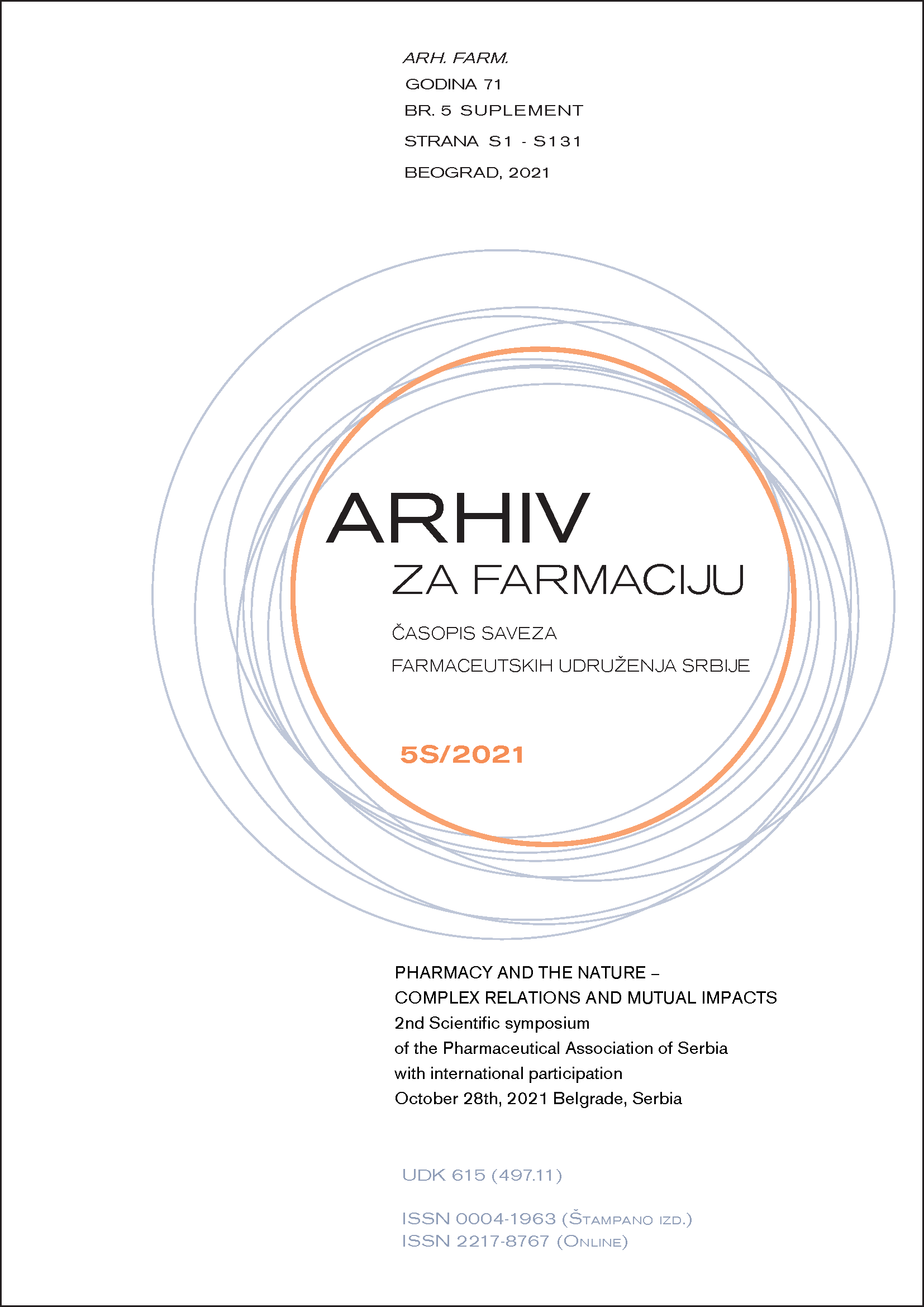CHEMICAL COMPOSITION AND ANTIBACTERIAL ACTIVITY OF ESSENTIAL OIL OBTAINED FROM CHAEROPHYLLUM BULBOSUM L. DRY INFLORESCENCES
Abstract
Chaerophyllum bulbosum L. is one of the six species of the genus Chaerophyllum L. (Apiaceae) growing wild in Serbia (1). This species, which is known as turnip-rooted chervil, is used as a traditional medicinal plant in Eastern Turkey (2). The present study reports the chemical composition and antibacterial activity of the essential oil obtained from Chaerophyllum bulbosum dry inflorescences. The essential oil obtained by hydrodistillation from the air dried samples collected on Vlasina plateau, Serbia, was analysed by the gas chromatography (GC) and gas chromatography-mass spectrometry (GC/MS). Eight components were characterized, representing 99.8 % of the total, with (E)-β-ocimene (87.9 %) being the major identified constituent. The essential oil was evaluated for its in vitro antibacterial activity against two Gram-positive and three Gram-negative bacteria by disk diffusion assay. The obtained results showed that essential oil isolated from dry inflorescences of C. bulbosum had significant antibacterial activity against Gram-positive bacteria, Staphylococcus aureus and Bacillus subtilis subsp. spizizenii (diameter of inhibition zone 24 mm and 21 mm, respectively) and moderate antibacterial activity against Escherichia coli, Salmonella abony and Pseudomonas aeruginosa with inhibition zones of 17 mm, 15 mm, and 14 mm, respectively.
If we compare our results with previously published results regarding the antibacterial effect of C. bulbosum essential oils (3, 4), it can be concluded that essential oils isolated from this plant species are more effective against Gram-positive bacteria.

